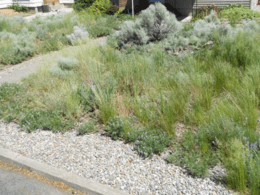Are you a gardening enthusiast looking to achieve year-round success? Proper storage of potting soil is crucial for saving money, preventing contamination, and deterring insects and mold growth. Without proper storage, your potting soil can become useless and even harmful to your plants.
In this article, we will provide you with tips and steps on how to store potting soil, including indoor and outdoor storage options. You may be wondering why proper storage is so important. Well, storing potting soil correctly can prevent it from becoming too wet or dry, which can lead to mold growth or depletion of nutrients.
Additionally, proper storage can deter insects and other pests from invading your soil, which can harm your plants. By following our tips for potting soil storage, you can ensure that your soil remains healthy and your plants thrive all year round.
So, let’s dive into the steps for proper storage of potting soil!
Quick Summary
- Proper storage of potting soil is crucial for saving money, preventing contamination, and deterring insects and mold growth.
- Group similar mixes of potting soil for easy identification and access, clean containers with a disinfecting solution to prevent contamination, and check for contaminants and dry mix before packing potting soil away.
- Seal and pack soil in airtight containers or bags to prevent moisture and pests from getting in, and label each container with the type of mix, the date of storage, and any other relevant information to make it easy to find and use later.
- Indoor storage options include smaller totes with lids or lidded garbage cans, while outdoor storage options include large bins with tight seals or thick plastic totes. It’s important to consider environmental factors when choosing storage containers.
Importance of Proper Storage
You know that proper storage of potting soil all year round is crucial because it saves you money and prevents contamination, deterring pests.
Storing your potting soil properly will help keep it fresh and healthy for your plants, and prevent it from becoming a breeding ground for unwanted bugs and fungi.
Preventing contamination is important because it keeps your plants healthy and free from diseases that can damage or even kill them.
Deterrent of pests is also important because insects can quickly take over your potting soil, making it difficult to use and even more difficult to get rid of.
By storing your potting soil properly, you can avoid these issues and ensure that you have fresh, healthy soil ready to use whenever you need it.
Is Sprinkling Seeds a Long-Term Solution for Planting Success?
Is sprinkling seeds a long-term solution for planting success? This question has sparked a seed sprinkling debate among gardeners. Some believe that randomly scattering seeds is a simple and natural way to promote growth, while others argue that it lacks precision and can result in uneven germination. To ensure long-term success, it is beneficial to research the specific needs of each plant and adopt suitable methods accordingly.
Steps for Proper Storage
Start by gathering and grouping similar mixes of potting soil to ensure that you can easily identify and access the right batch when you need it. Once you have your mixes organized, it’s time to clean your containers to prevent contamination. Use a disinfecting solution to thoroughly clean your pots, buckets, or bins to ensure that they’re free from any harmful bacteria or fungi that could harm your plants.
To maximize your chances of success when storing potting soil all year round, here are some essential steps to follow:
- Check for contaminants and dry mix before packing it away.
- Seal and pack your soil in airtight containers or bags to prevent moisture and pests from getting in.
- Label each container with the type of mix, the date of storage, and any other relevant information to make it easy to find and use later.
- Store your potting soil in a location with low humidity, and avoid exposing it to harsh weather conditions.
By following these steps, you can ensure that your potting soil will remain fresh and usable for months to come. However, there are also some common mistakes to avoid, such as failing to check for contaminants or using containers that aren’t airtight. Taking the time to store your potting soil properly can save you money and help you maintain healthy plants throughout the year.
Indoor and Outdoor Options
For indoor storage, consider using smaller totes with lids or inexpensive yet attractive options like lidded garbage cans. These containers are great for storing smaller amounts of potting soil and can easily fit into closets or basements. They also provide an added layer of protection against moisture and insects. If you have a larger quantity of potting soil, consider using a garbage can with wheels and a scooper set for easy transport.
When it comes to outdoor storage, large bins with tight seals or thick plastic totes are great choices. These containers can withstand harsh weather conditions and protect your potting soil from moisture, insects, and rodents. It’s important to consider the environmental factors when choosing your storage containers. For example, if you live in an area with high humidity, it may be best to store your potting soil indoors to prevent moisture buildup. Use the table below as a guide to help you choose the best storage container for your needs.
| Container Type | Indoor/Outdoor Use | Capacity | Features |
|---|---|---|---|
| Small Totes with Lids | Indoor | 2-5 gallons | Stackable, easy to store |
| Lidded Garbage Cans | Indoor | Up to 30 gallons | Wheels for easy transport |
| Large Bins with Tight Seals | Outdoor | 30-50 gallons | Weather-resistant, rodent-proof |
| Thick Plastic Totes | Outdoor | Up to 100 gallons | Durable, easy to clean |
Remember to label your containers for easy identification and keep them in a dry, cool place to ensure the longevity and quality of your potting soil.
Frequently Asked Questions
Can I store potting soil in its original packaging?
You can store potting soil in its original packaging, but it’s not the best option. The packaging can tear, allowing in insects and water. It’s better to use airtight storage containers to keep your soil fresh and protected.
How often should I check my stored potting soil for moisture and contaminants?
To prevent contamination and ensure your stored potting soil is usable, moisture monitoring and checking for contaminants should be done regularly. Check every few weeks to ensure it stays dry and bug-free.
How long can potting soil be stored before it goes bad?
Wondering how long your potting soil can last? Optimal storage conditions can extend shelf life, but factors affecting potting soil quality include moisture, temperature, and exposure to sunlight. Check for contaminants before use.
What is the best way to store potting soil if I live in a humid climate?
If you live in a humid climate, it’s important to prevent moisture when storing potting soil. Use airtight containers and keep them in a cool, dry indoor location. Check for tears or cracks in bags that can let in water.
Can I reuse potting soil from previous years?
You can reuse potting soil from previous years, but be aware of nutrient depletion. Mix in fresh soil and compost for added nutrients. Always check for contamination and store properly to prevent insect and mold growth.








